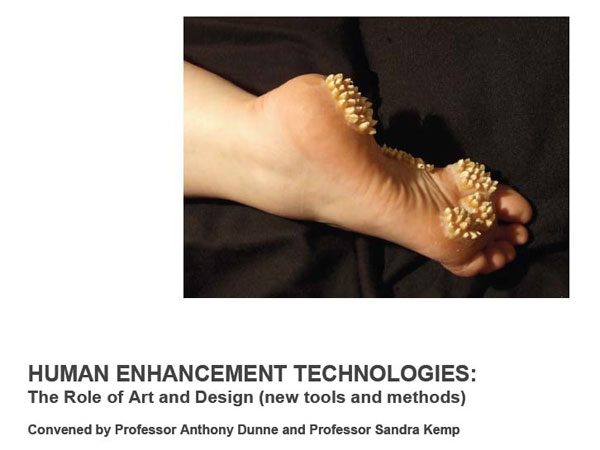Already mentioned before, but in context of certain art and design positions in terms of human enhancement technologies we would like to draw attention again to some of the RCA (Royal College of Art, London) projects in this field:
The Methods Network was an AHRC-funded, multi-disciplinary partnership which ran from 1 April 2005 to 31 March 2008 providing a national forum for the exchange and dissemination of expertise in the use of Information and Communication Technologies (ICT) for arts and humanities research.
The aims of the Methods Network were to promote, support and develop the use of advanced ICT methods in arts and humanities research and to support the cross-disciplinary network of practitioners from institutions around the UK; to develop a programme of activities and publications on advanced ICT tools and methods and to ensure the broadest participation of the community by means of an open call for proposals for Methods Network activities.
In collaboration with King’s College London, Sheffield Humanities Research Institute, Lancaster and Royal Holloway University, Professor Sandra Kemp was awarded funding to support a new initiative to promote and disseminate the use of ICT in UK Arts and Humanities research.
As part of the RCA’s involvement in the AHRC ICT Methods Network, Professor Sandra Kemp, Director of Research at the Royal College of Art co-hosted, with Professor Anthony Dunne from the Department of Design Interactions, a workshop entitled Human Enhancement Technologies: The Role of Art and Design (new tools and methods) at the Goethe-Institut in 2008.

